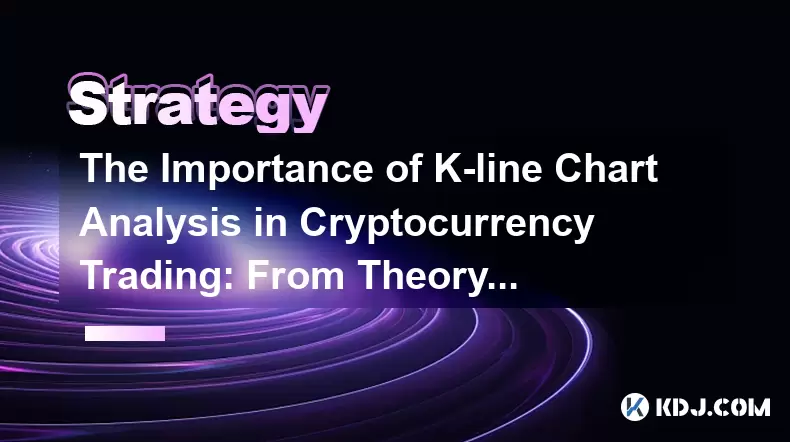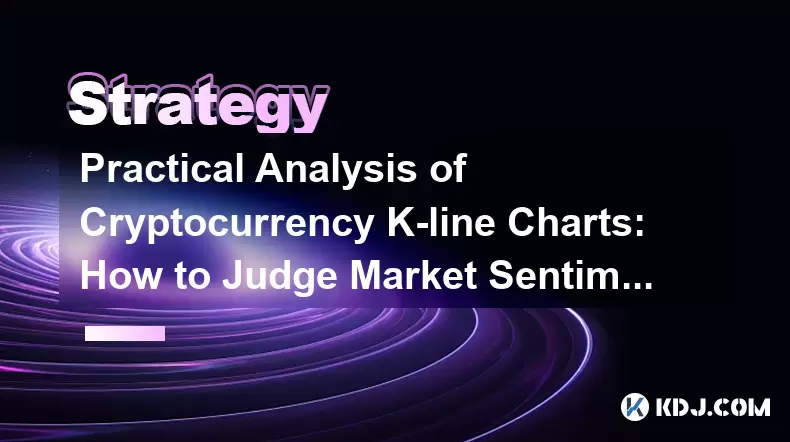-
 Bitcoin
Bitcoin $105,575.5012
1.85% -
 Ethereum
Ethereum $2,564.5217
3.74% -
 Tether USDt
Tether USDt $1.0004
-0.01% -
 XRP
XRP $2.1452
2.16% -
 BNB
BNB $652.0550
1.17% -
 Solana
Solana $147.1705
3.26% -
 USDC
USDC $1.0000
0.03% -
 Dogecoin
Dogecoin $0.1779
3.82% -
 TRON
TRON $0.2712
0.96% -
 Cardano
Cardano $0.6379
2.29% -
 Hyperliquid
Hyperliquid $41.7950
8.57% -
 Sui
Sui $3.0390
2.83% -
 Bitcoin Cash
Bitcoin Cash $444.7546
10.90% -
 Chainlink
Chainlink $13.3217
2.93% -
 UNUS SED LEO
UNUS SED LEO $9.0330
1.67% -
 Avalanche
Avalanche $19.2972
3.29% -
 Stellar
Stellar $0.2591
1.53% -
 Toncoin
Toncoin $3.0119
2.75% -
 Shiba Inu
Shiba Inu $0.0...01207
4.79% -
 Hedera
Hedera $0.1584
4.60% -
 Litecoin
Litecoin $86.1815
5.14% -
 Polkadot
Polkadot $3.8108
2.61% -
 Ethena USDe
Ethena USDe $1.0006
0.01% -
 Monero
Monero $309.5977
2.25% -
 Dai
Dai $1.0000
0.01% -
 Bitget Token
Bitget Token $4.5499
1.84% -
 Uniswap
Uniswap $7.5738
9.50% -
 Pepe
Pepe $0.0...01117
5.49% -
 Aave
Aave $289.1514
8.48% -
 Pi
Pi $0.5786
3.79%
How to protect my portfolio through hedging strategies in a bear market?
In the face of market volatility, the art of hedging emerges as a shield against cryptocurrency portfolio risks, balancing investments with instruments like perpetual contracts, options, and inverse ETFs.
Nov 08, 2024 at 08:54 am

Step 1: Understanding Market Risk and Hedging Strategies
In the turbulent waters of a bear market, safeguarding your cryptocurrency portfolio becomes paramount. Volatility surges, prices plummet, and investor sentiment sours, posing significant risks to your investments. Hedging strategies emerge as a lifeline, offering a proactive approach to mitigate these risks and preserve your portfolio's value.
Hedging involves using financial instruments to offset the potential losses incurred from unfavourable market movements. By carefully balancing your portfolio with hedging strategies, you can create a defensive posture that cushions the impact of market downturns and enhances your chances of weathering the storm.
Step 2: Identifying Suitable Hedging Instruments
The cryptocurrency market presents a diverse spectrum of hedging instruments, each tailored to specific risk profiles and investment goals. Among the most popular hedging strategies are:
- Perpetual Contracts: These futures-like instruments allow traders to speculate on the future price of an asset while simultaneously reducing risk. By taking opposing positions in perpetual contracts, traders can hedge against price fluctuations and lock in profits.
- Options Contracts: Options provide the right, but not the obligation, to buy (call options) or sell (put options) an asset at a predetermined price. Hedgers can use put options to protect against price declines, while call options offer downside protection and limited upside potential.
- Inverse ETFs: These exchange-traded funds provide an inverse exposure to the underlying crypto assets, effectively mirroring their price movements in reverse. Hedgers can utilize inverse ETFs to capitalize on market downturns and mitigate the impact of price decreases.
Step 3: Determining the Optimal Hedging Ratio
Once you have chosen suitable hedging instruments, the next step is to determine the optimal hedging ratio. This ratio represents the proportion of your portfolio that should be allocated to hedging strategies, and it varies depending on your risk tolerance and market outlook.
Factors to consider when determining the hedging ratio include:
- Risk Tolerance: Assess your ability to withstand potential losses and adjust the hedging ratio accordingly. Higher risk tolerance warrants a lower hedging ratio, while conservative investors may opt for more substantial hedging.
- Market Outlook: Forecast market conditions and anticipate potential price movements. In anticipation of a prolonged bear market, a higher hedging ratio may be prudent. Conversely, in more optimistic scenarios, a lower ratio may suffice.
Step 4: Implementing Hedging Strategies
With the hedging ratio established, it's time to implement the hedging strategies. This involves:
- Calculating the Hedging Position: Determine the number of hedging instruments required to achieve the desired hedging ratio. Consider the face value of the instruments and their leverage to calculate the appropriate position size.
- Executing the Trades: Execute trades on the selected hedging instruments, taking into account market prices and potential slippage. Monitor the positions closely and adjust as needed to maintain the desired hedging ratio.
Step 5: Monitoring and Adjusting Hedging Strategies
Hedging strategies should not be static but rather dynamic, adjusted in response to changing market conditions and evolving investment objectives. Regular monitoring is crucial to ensure the hedges continue to align with your risk management goals:
- Performance Evaluation: Regularly assess the effectiveness of your hedging strategies. Analyze how they impact portfolio performance and adjust positions as needed to optimize risk mitigation.
- Market Analysis: Stay abreast of market trends and shifts. Identify emerging risks and adjust hedging strategies accordingly to enhance protection in dynamic market environments.
Disclaimer:info@kdj.com
The information provided is not trading advice. kdj.com does not assume any responsibility for any investments made based on the information provided in this article. Cryptocurrencies are highly volatile and it is highly recommended that you invest with caution after thorough research!
If you believe that the content used on this website infringes your copyright, please contact us immediately (info@kdj.com) and we will delete it promptly.
- Trezor Has Officially Integrated 1inch Fusion Into Its Trezor Suite
- 2025-06-14 10:20:12
- Pi Network's Token (PI) Forms Bullish "Double Bottom" Pattern, Setting the Stage for a Short Squeeze
- 2025-06-14 10:20:12
- Trezor Has Officially Integrated 1inch Fusion
- 2025-06-14 10:15:24
- In a Bifurcated Crypto Market, Both Legacy Projects and Emerging Infrastructures Are Offering Compelling Narratives
- 2025-06-14 10:15:24
- Shiba Inu (SHIB) token burn portal is live on Shibarium
- 2025-06-14 10:14:09
- Solana (SOL) price up 4.3% as open interest nears all-time highs, spot ETF approval odds jump to 91%
- 2025-06-14 10:14:09
Related knowledge

Cryptocurrency K-line chart technical analysis manual: Learn these methods to increase your chances of making a profit
Jun 11,2025 at 11:21pm
Understanding the Basics of K-line ChartsK-line charts, also known as candlestick charts, are one of the most widely used tools in cryptocurrency trading. Each K-line represents a specific time period and provides information about the open, high, low, and close prices during that interval. The body of the candle shows the relationship between the openi...

The Importance of K-line Chart Analysis in Cryptocurrency Trading: From Theory to Practical Cases
Jun 11,2025 at 04:56pm
Understanding the Basics of K-line ChartsK-line charts, also known as candlestick charts, are a visual representation of price movements over specific time intervals. Each K-line encapsulates four critical data points: the opening price, closing price, highest price, and lowest price within a given timeframe. These charts originated in Japan during the ...

Cryptocurrency K-line Chart Interpretation Guide: How Novices Can Quickly Master the Basics of Technical Analysis
Jun 10,2025 at 08:56pm
Understanding the Basics of K-line ChartsK-line charts, also known as candlestick charts, are one of the most widely used tools in cryptocurrency trading for analyzing price movements. Each K-line represents a specific time period and shows the opening, closing, high, and low prices during that interval. For novices, grasping how to read these elements ...

Introduction to Cryptocurrency K-line Charts: How to Use Technical Analysis to Optimize Trading Decisions
Jun 12,2025 at 03:56pm
Understanding the Basics of K-line ChartsK-line charts, also known as candlestick charts, are one of the most essential tools used in cryptocurrency trading. Originating from Japan, these charts visually represent price movements over specific time intervals. Each candlestick displays four key pieces of information: the opening price, closing price, hig...

K-line Chart Analysis Skills: Key Chart Patterns in Cryptocurrency Trading
Jun 13,2025 at 10:21am
Understanding the Basics of K-line Charts in Cryptocurrency TradingK-line charts, also known as candlestick charts, are essential tools for analyzing price movements in cryptocurrency markets. Each candlestick represents a specific time frame and provides information about the open, high, low, and close (OHLC) prices during that period. In crypto tradin...

Practical Analysis of Cryptocurrency K-line Charts: How to Judge Market Sentiment through Charts
Jun 10,2025 at 09:42pm
Understanding the Basics of Cryptocurrency K-line ChartsCryptocurrency K-line charts, also known as candlestick charts, are essential tools for analyzing price movements in the crypto market. Each candlestick represents a specific time frame, such as 1 minute, 5 minutes, or even daily intervals. The structure of a K-line includes four key data points: o...

Cryptocurrency K-line chart technical analysis manual: Learn these methods to increase your chances of making a profit
Jun 11,2025 at 11:21pm
Understanding the Basics of K-line ChartsK-line charts, also known as candlestick charts, are one of the most widely used tools in cryptocurrency trading. Each K-line represents a specific time period and provides information about the open, high, low, and close prices during that interval. The body of the candle shows the relationship between the openi...

The Importance of K-line Chart Analysis in Cryptocurrency Trading: From Theory to Practical Cases
Jun 11,2025 at 04:56pm
Understanding the Basics of K-line ChartsK-line charts, also known as candlestick charts, are a visual representation of price movements over specific time intervals. Each K-line encapsulates four critical data points: the opening price, closing price, highest price, and lowest price within a given timeframe. These charts originated in Japan during the ...

Cryptocurrency K-line Chart Interpretation Guide: How Novices Can Quickly Master the Basics of Technical Analysis
Jun 10,2025 at 08:56pm
Understanding the Basics of K-line ChartsK-line charts, also known as candlestick charts, are one of the most widely used tools in cryptocurrency trading for analyzing price movements. Each K-line represents a specific time period and shows the opening, closing, high, and low prices during that interval. For novices, grasping how to read these elements ...

Introduction to Cryptocurrency K-line Charts: How to Use Technical Analysis to Optimize Trading Decisions
Jun 12,2025 at 03:56pm
Understanding the Basics of K-line ChartsK-line charts, also known as candlestick charts, are one of the most essential tools used in cryptocurrency trading. Originating from Japan, these charts visually represent price movements over specific time intervals. Each candlestick displays four key pieces of information: the opening price, closing price, hig...

K-line Chart Analysis Skills: Key Chart Patterns in Cryptocurrency Trading
Jun 13,2025 at 10:21am
Understanding the Basics of K-line Charts in Cryptocurrency TradingK-line charts, also known as candlestick charts, are essential tools for analyzing price movements in cryptocurrency markets. Each candlestick represents a specific time frame and provides information about the open, high, low, and close (OHLC) prices during that period. In crypto tradin...

Practical Analysis of Cryptocurrency K-line Charts: How to Judge Market Sentiment through Charts
Jun 10,2025 at 09:42pm
Understanding the Basics of Cryptocurrency K-line ChartsCryptocurrency K-line charts, also known as candlestick charts, are essential tools for analyzing price movements in the crypto market. Each candlestick represents a specific time frame, such as 1 minute, 5 minutes, or even daily intervals. The structure of a K-line includes four key data points: o...
See all articles

























































































